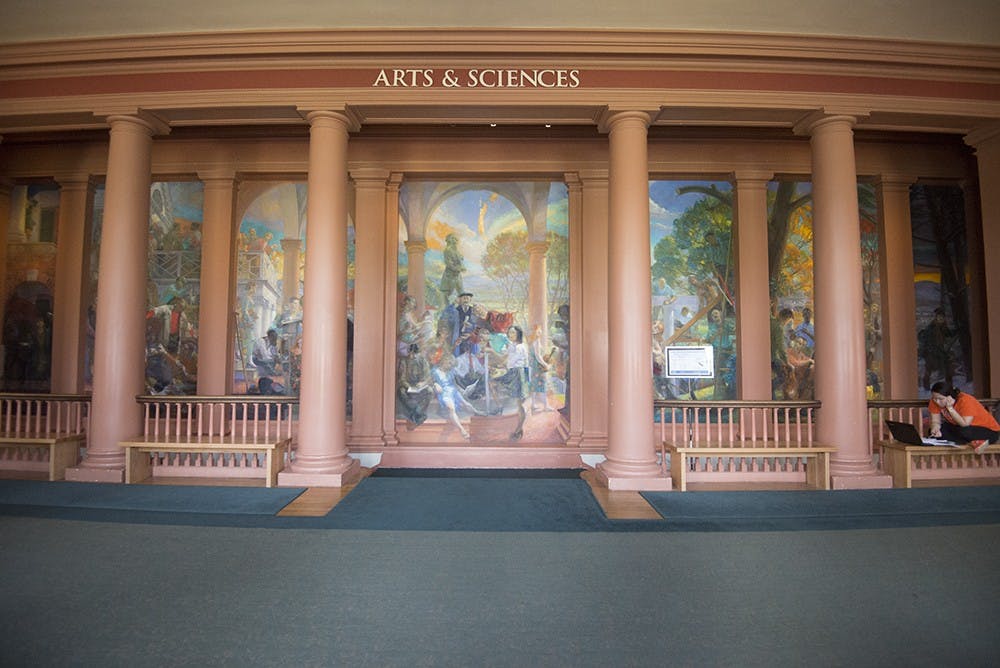A mural located in Old Cabell Hall has become the target of complaints from University community members, who say a particular panel of the mural condones a party culture and trivializes issues of sexual harassment and assault.
The multi-paneled mural, called “The Student’s Progress,” was commissioned by a group of University benefactors in 1996. It follows the narrative of a fictional University student Shannon through her time at the University, and her life where she eventually returns as a professor.
The panel in question — completed by artist Lincoln Perry in 2012 — depicts a party scene on the Lawn. The scene, among other things, depicts students drinking and party imagery, what appears to be a professor and student who have just had sexual relations and an incident where students are shown taping another student a column of the Rotunda.
Concern and criticism of the mural previously arose following Rolling Stone’s 2014 article “A Rape on Campus.”
University Music Prof. Bonnie Gordon, who works in Old Cabell Hall, said she finds the imagery inappropriate and thinks it is problematic that the lyrics paired with the panel suggest it depicts an ideal University experience.
“I personally feel like having a mural like that in a teaching space doesn’t create the kind of atmosphere I want, and I find it disturbing when first-year students and prospective students walk past that, especially as we keep talking about attempts to create a different kind of climate,” Gordon said.
Others members of the University community have expressed their concerns with the panel.
Assoc. History Prof. John Mason said he thinks Gordon presents a compelling argument that certain panels allude to sexual encounters between faculty and students that University policies prohibit.
“I can also see why some people believe that the artwork makes a joke out of what might be called sexual harassment,” Mason said in an email statement. “I know for certain that it makes some people uncomfortable when they see it.”
Assoc. Nursing Prof. Kathryn Laughon said the image of a young female being supported by a male in the mural is so problematic that it could be used in Green Dot training as an example of how to identify inappropriate situations around sexual assault and hazing.
“We could use that shot in a Green Dot training video around when we can recognize when someone is too incapacitated to consent,” Laughon said. “Her head is lulled back, her eyes are closed and she looks like she is being held up by the guy.”
Laughon said she was also concerned the panel features harmful racial and gender stereotypes, and that the panel facing the scene on the opposite wall features recognizable professors gazing at the party scene.
“As far as I’m concerned there’s not really a lot of value in this painting except maybe a living example of a red dot,” Laughon said. “We can almost think of it as part of the Green Dot campaign. We can use it as ‘where do we need to put green dots over these red dots?’”
Laughon said she doesn’t think the painting makes the University a better place.
“That’s not what I would want people to see about our university,” Laughon said.
“That’s maybe what upsets me the most is, this is my community, and that is not part of my community.”
In response to concern from community members, the University formed a committee to discuss the problem.
“A University committee was formed to review the mural in Old Cabell Hall and to make recommendations to the administration,” University Spokesperson Anthony de Bruyn said in an email statement. “A decision has yet to be made.”
Gordon said some possible actions that have been suggested include leaving the mural as it is, covering it up, repainting it or consulting with the artist.
Lincoln Perry declined to comment.





